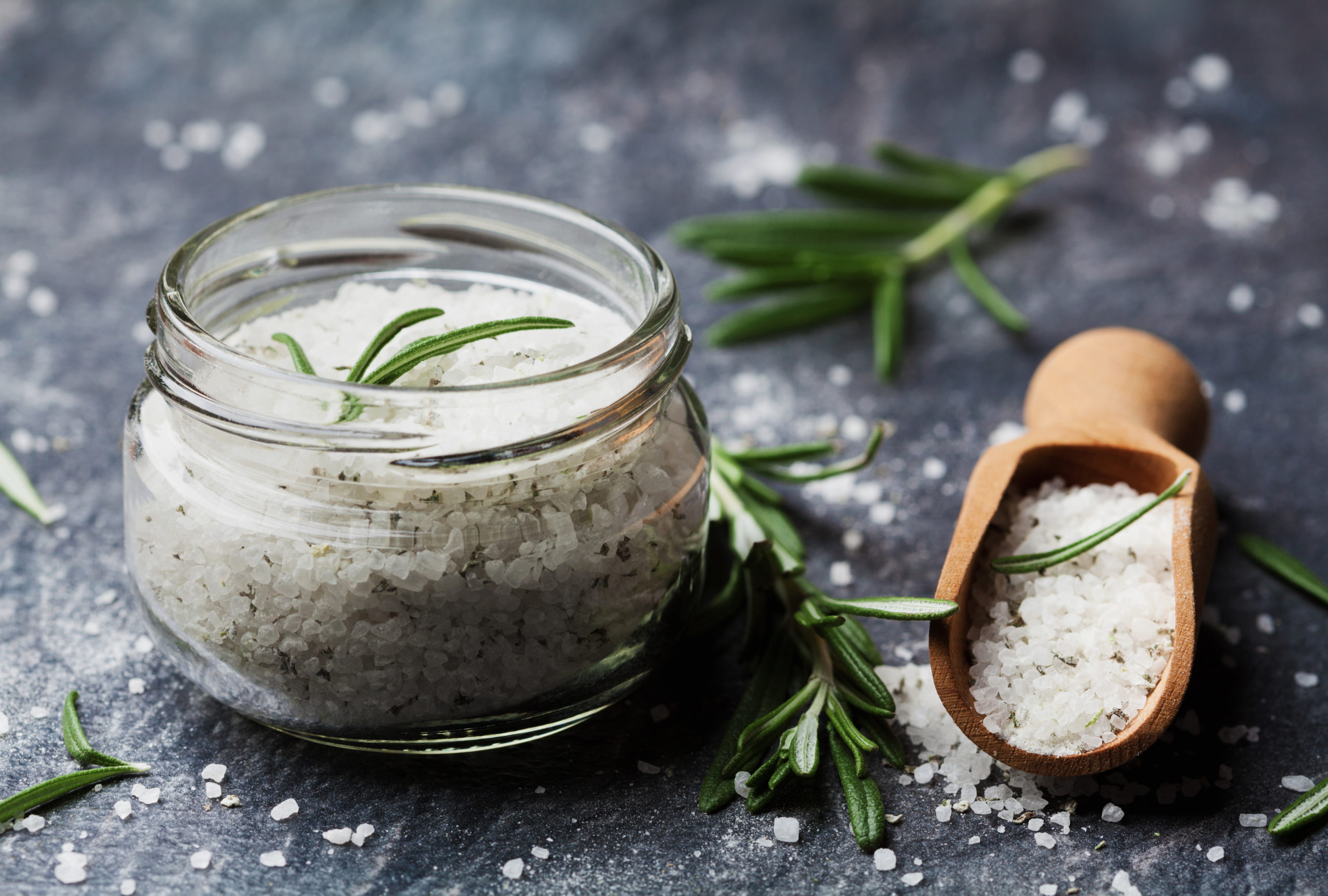Watching salt intake? This homemade herb salt can add more flavor for less.
While salt may be an original ingredient and common kitchen staple, it is anything but basic. This mighty crystal has the ability to add a superb burst of flavor to any dish or balance sweetness in a delicious dessert recipe. Salt is also used for creating firm texture, enhancing vibrant colors, and aiding in food preservation.
Salt occurs naturally in many foods, including meat and milk; however, packaged and canned goods often contain an overabundance of salt for shelf-stability and taste. Recently published by the U.S. Department of Agriculture and Health and Human Services, The 2015 Dietary Guidelines for Americans recommends limiting daily salt intake to 2,300 milligrams daily. For people with prehypertension or hypertension, 1,500 milligrams is recommended to help lower blood pressure.
Despite national recommendations to reduce salt intake (here’s why), salt is an essential nutrient that must be consumed in order to maintain health. Salt plays many key roles in the human body, including involvement in muscle and nerve contraction, fluid balance and maintenance of blood pressure. Since salt is found in nearly everything Americans eat, it should only be added to recipes and sprinkled on table food in small quantities.
Not all salt is the same. Different types of salt are used for a variety of purposes both inside and outside of the kitchen.
Tired of using plain table salt in your recipes? Spice up your salt by creating your own. Homemade flavored salt is simple, trendy and can enhance the taste of any dish. Fresh herbs such as basil, cilantro, dill, mint, oregano, parsley, rosemary and/or sage can be purchased at your local farmers market and are some of many ideal ingredients for creating delicious bursts of flavor. Other ingredients such as dehydrated vegetables, citrus fruit zest, dried lavender or red pepper flakes also serve as perfect mix-ins.
If you are trying to limit sodium, cooking with flavored salts may be a better alternative to table salt, as less may be needed in order to achieve maximum flavor. Additionally, creating recipes with Kosher salt may be beneficial, as it contains less sodium per ¼ teaspoon compared to other salt varieties. See below for a unique recipe on how to make your own flavored salt.
- 3 loosely-packed cups of fresh herbs of your choice (like basil, dill, rosemary)
- ½ cup coarse salt (like coarse sea salt, kosher salt)
- Wash herbs and remove coarse stems and discolored leaves. Dry completely.
- Place herbs and salt in a food processor. Pulse until coarsely ground.
- Pour the herb salt in a tightly-sealed container and place in the refrigerator for 7-14 days, or until the flavors meld. Gently shake each day.

